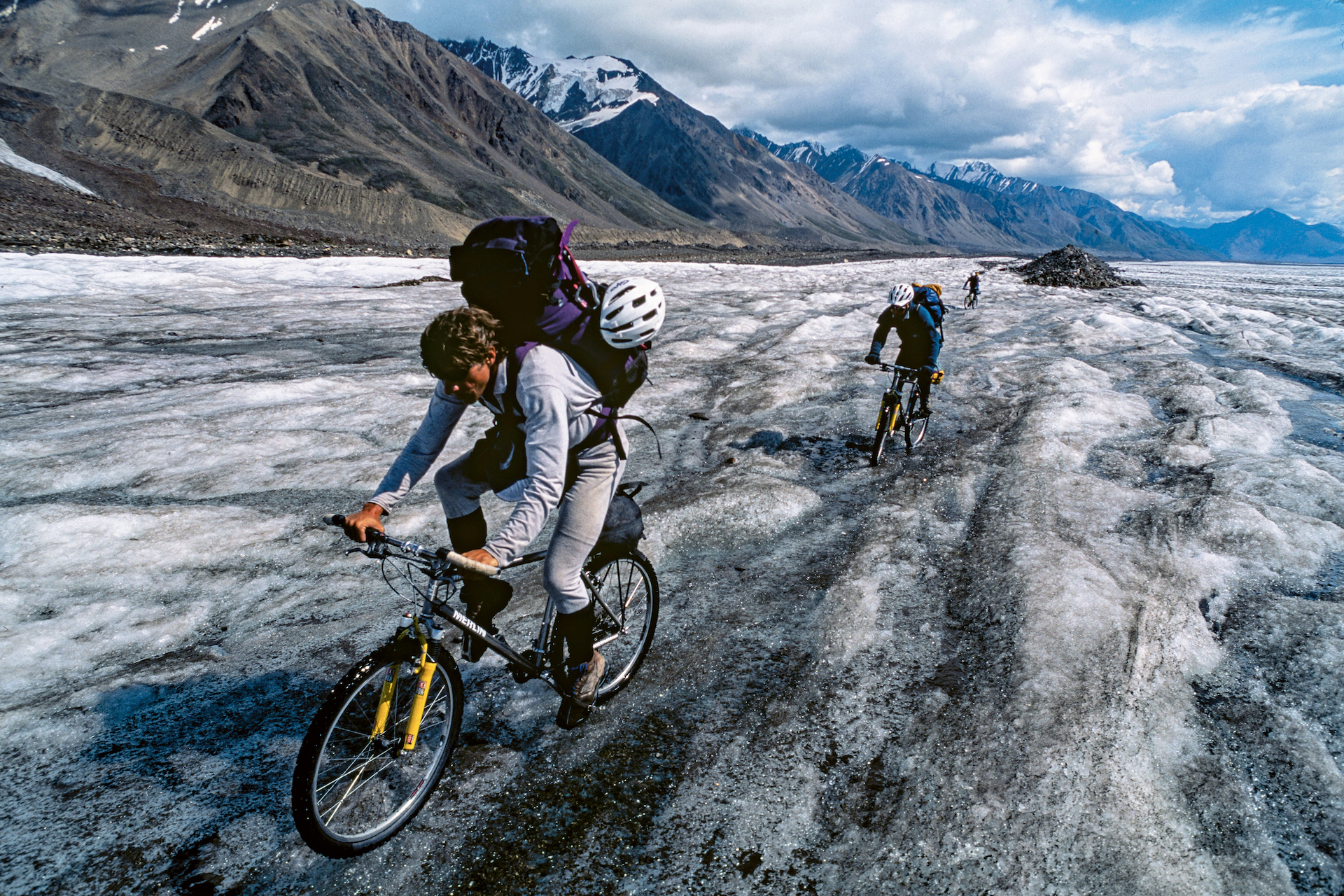In his new book, Live to Ride, Peter Flax explores the common threads that bind our disparate cycling subcultures together. Along the way, he profiles notable luminaries from the sport’s present and past, highlighting the breadth and depth of two-wheeled adventure, exploration, and culture and resurfacing long-forgotten feats. This pioneering 1996 bikepacking adventure, as remembered by Dial in an excerpt from Live to Ride, is one such tale. That the expedition was the subject of a National Geographic feature illustrated by photographer Bill Hatcher’s stunning imagery gives it a near-mythical status among American cyclists old enough to remember it. And yet, in the decades since, Dial’s bold feats have been almost lost to time.
The word bikepacking didn’t exist in 1996. For that matter, the concept that would inform the term—the idea of an ambitious backcountry wilderness trip on bikes—didn’t yet exist either. But thanks to a groundbreaking and truly epic expedition in Alaska undertaken by Roman Dial and two companions, a trip that would be documented and celebrated the following year in National Geographic, adventure-curious cyclists got a sense of what was possible on a bike.
Like so many of the groundbreakers featured in this book, Dial got hooked on riding as a kid. Growing up in Virginia in the 1970s, he got a ten-speed when he was eight or nine. And by the time he was in eighth grade, he had a Bob Jackson frame made out of Reynolds 531 steel and was buying Campagnolo components piece by piece. He never had any interest to race, but as a young teenager he found excitement touring on the Blue Ridge Highway and the Outer Banks.
He first visited Alaska when he was nine, staying with an uncle who lived and worked at a coal-mining camp in the mountains. Dial fell in love with the state and moved there in the late ’70s. His road bike wasn’t very useful up there for most of the year. But when mountain bikes started to become more widely available in the early ’80s, Dial—who was teaching environmental science at a university in Anchorage—began fantasizing about getting a bike he could ride to remote climbing sites or use to traverse glaciers.
The 1996 expedition – an unprecedented 775-mile (1,250 km) journey across the entire width of the rugged Alaska Range with his friends Paul Adkins and Carl Tobin – was the product of that obsession. The trio rode titanium mountain bikes and carried inflatable pack rafts and otherwise traveled as light as humanly possible. They didn’t even bring silverware; they ate meals off wrenches and other bike tools.

Dial and his buddies pedaled across glaciers and ran Class III rapids with the bikes on their rafts and rode on gravel bars and animal tracks whenever they could. “We called the glaciers ‘slip rock,’” Dial says with a laugh. “The best was riding on buffalo trails. Buffalo avoid downed trees and leave beautifully buffed-out trails.”
Dial, who has spent decades obsessively pursuing outdoor expeditions that satisfy both his passion for adventure and his academic interest in environmental science, says that bikes are his favorite way to travel in the wilderness. “You can walk almost anywhere – there’s not really any creativity or imagination required,” he says.
Roughly seven weeks after they started at the Canada–United States border, the trio reached Lake Clark National Park and Preserve. They had successfully traversed some of the most rugged and beautiful swaths of wilderness in North America. And thanks to a fourteen-page, photo-heavy National Geographic feature that Dial wrote, word of this new style of bike adventure spread far and wide.
Dial’s escapades hardly ended with that trip. He’s done big fat-bike adventures on Alaskan beaches and was part of the early days of gravel adventure riding during a stint living in California. He feels happy and maybe a little bit surprised that bikepacking has caught on; after all, when he embarked on those early expeditions, he was an eccentric trailblazer. But now tens of thousands of riders buy specialized equipment and pedal into the backcountry to find adventure and peace and a connection to the natural world. “Bikes are the coolest thing ever invented,” Dial says. “The bike makes you pay attention to nature. When we ride, the wind and the nuances of the terrain matter. And when we ride, our bodies and nature are connected.”
What did you think of this story?

